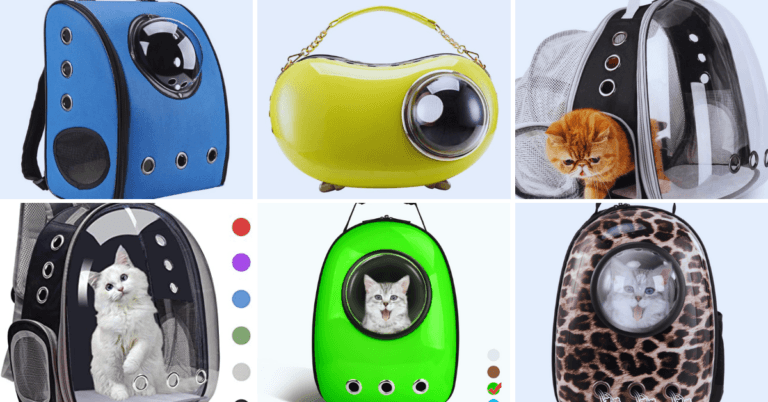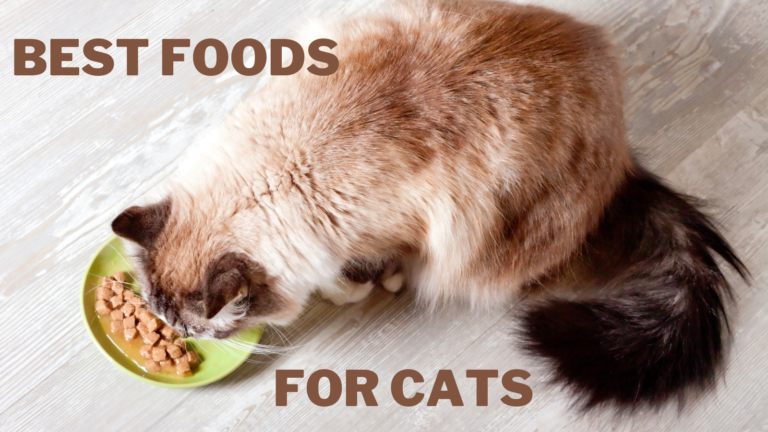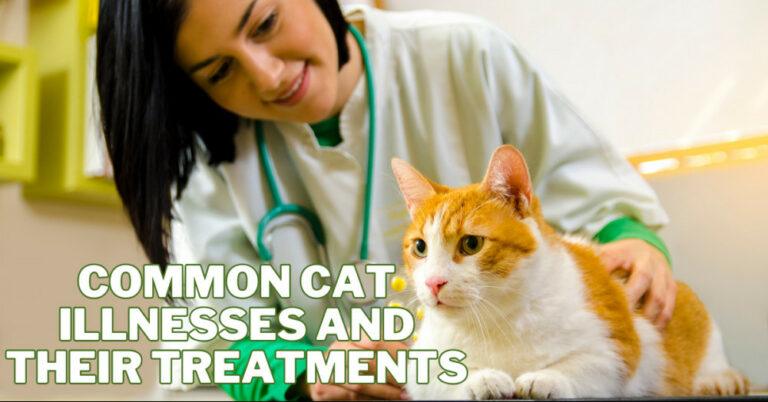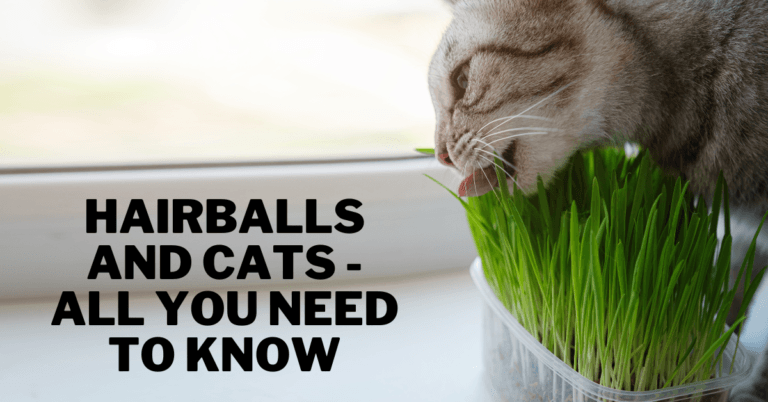Understanding Heat Stroke In A Cat

Understanding Heat Stroke In A Cat
As temperatures soar, the risk of heat stroke in cats becomes a pressing concern for pet owners.
While cats are known for their resilience and independence, they are not immune to the dangers of extreme heat.
Heat stroke in a cat, a potentially life-threatening condition, underscores the importance of recognizing its signs and taking prompt action to prevent irreversible damage and ensure feline well-being.
Unlike humans, cats lack efficient sweat glands, making them susceptible to overheating.
Factors such as high humidity, lack of shade, confinement in a hot environment, or vigorous exercise can exacerbate the risk of heat stroke in felines.
It is critical to identify the warning signs and symptoms of heat stroke in cats and to act quickly to protect their important organs from irreversible damage and to ensure their overall health.
This article aims to equip pet owners with the necessary knowledge and resources to safeguard their beloved feline pets during the hot summer months by examining the causes, symptoms, treatment options, and preventive measures for heat stroke in cats.
What Is Heatstroke In Cats?
Heatstroke in cats is serious when their body temperature rises to dangerous levels due to exposure to high temperatures.
Imagine your furry friend panting excessively, desperately trying to cool down as if trapped in a sauna with no escape.
Unlike humans, cats can't sweat profusely to regulate their temperature, making them more vulnerable to heat-related illnesses.
When they're unable to cool down, their internal organs can quickly become damaged, leading to potentially fatal consequences.
Heatstroke can happen in various scenarios, such as being left in a hot car or spending too much time outside on scorching days without adequate shade and water.
Watch out for signs like excessive panting, drooling, lethargy, rapid heartbeat, vomiting, diarrhea, and even collapse.
It's crucial to act fast if you notice these symptoms, as heatstroke can progress rapidly and cause organ failure or even death.
Factors like obesity, respiratory issues, age, and certain breeds with flat faces are particularly susceptible to heatstroke.
Prevention is the best defence against heatstroke in cats. Ensure your furry friend can access shady spots and fresh water, especially during hot weather.
Avoid strenuous activities in the heat, and never leave your cat unattended in a parked car, even for a short time.
By staying vigilant and taking proactive measures to keep your cat cool and comfortable, you can help protect them from the dangers of heatstroke and ensure they remain happy and healthy all year round.
Difference Between Heatstroke And Heat Exhaustion In Cats
Heatstroke and heat exhaustion are heat-related illnesses but differ in severity and symptoms.
Heat exhaustion is considered less severe than heatstroke. It usually happens when the body overheats due to dehydration and extended exposure to high temperatures.
Heat exhaustion symptoms include clammy skin, headaches, nausea, dizziness, weakness, and excessive perspiration.
While heat exhaustion can be uncomfortable and distressing, it is usually not life-threatening if promptly addressed.
Unlike heat exhaustion, heat stroke in a cat poses a severe and potentially life-threatening risk, requiring immediate intervention to prevent serious complications and ensure the cat's well-being.
It occurs when the body's temperature regulation system fails, and the core body temperature rises dangerously.
Unlike heat exhaustion, heatstroke often involves the cessation of sweating, as the body's ability to cool becomes overwhelmed.
Symptoms of heatstroke may include a high body temperature (above 104°F or 40°C), hot and dry skin, rapid heartbeat, rapid and shallow breathing, confusion, agitation, seizures, and loss of consciousness.
Heatstroke is a medical emergency that requires immediate intervention to prevent serious complications, including organ failure, brain damage, and death.
In summary, while heatstroke and heat exhaustion result from exposure to high temperatures, heatstroke is more severe and requires urgent medical attention.
In contrast, heat exhaustion can typically be managed with rest, hydration, and cooling measures.

Causes Of Heatstroke In Cats
Heatstroke in cats can occur when their body temperature rises to dangerous levels due to exposure to high temperatures and inadequate cooling mechanisms. Several factors can contribute to heatstroke in cats:
1. Poor ventilation
Cats left in poorly ventilated areas, such as closed rooms or cars, are at a higher risk of heatstroke. The heat can accumulate rapidly without proper airflow, leading to dangerous temperatures.
2. Humidity
High humidity can exacerbate heat-related illnesses in cats. When the air is humid, moisture evaporation from the cat's respiratory system and skin is less effective, making it harder for them to cool down.
3. Direct Sunlight
Cats left in direct sunlight risk overheating, especially for prolonged periods. Sun exposure can significantly increase their body temperature, especially if they cannot find shade.
4. Dehydration
Dehydration can compound the effects of heatstroke in cats. Lack of access to fresh water or insufficient fluid intake can impair their ability to regulate body temperature and cool down through panting.
5. Excessive Grooming
Cats may excessively groom when stressed or anxious, increasing heat production. In hot weather, excessive grooming can contribute to overheating, especially if the cat cannot find a cool place to rest.
6. Physical Exertion
Cats engaging in strenuous physical activity, such as running or playing vigorously, in hot weather are at a higher risk of heatstroke.
Their bodies generate more heat during activity; they may succumb to heatstroke if they cannot effectively dissipate it.
7. Restrictive Environments
Cats confined to carriers or small, enclosed spaces without adequate ventilation are vulnerable to heatstroke, especially if they cannot move freely to find cooler areas.
8. Pre-Existing Health Conditions
Heatstroke may be more common in cats with medical issues, such as heart disease or respiratory problems.
These conditions can compromise their ability to regulate body temperature and cope with heat stress.
Understanding these detailed points can help cat owners recognize potential risks and take proactive measures to prevent heatstroke in their feline companions.
Regularly monitoring environmental conditions, providing ample shade and water, and avoiding situations that can lead to overheating are essential for keeping cats safe during hot weather.
Signs Of Heatstroke In Cats
Recognizing the signs of heatstroke in cats is crucial for prompt intervention and treatment. Here are some common signs to watch out for:
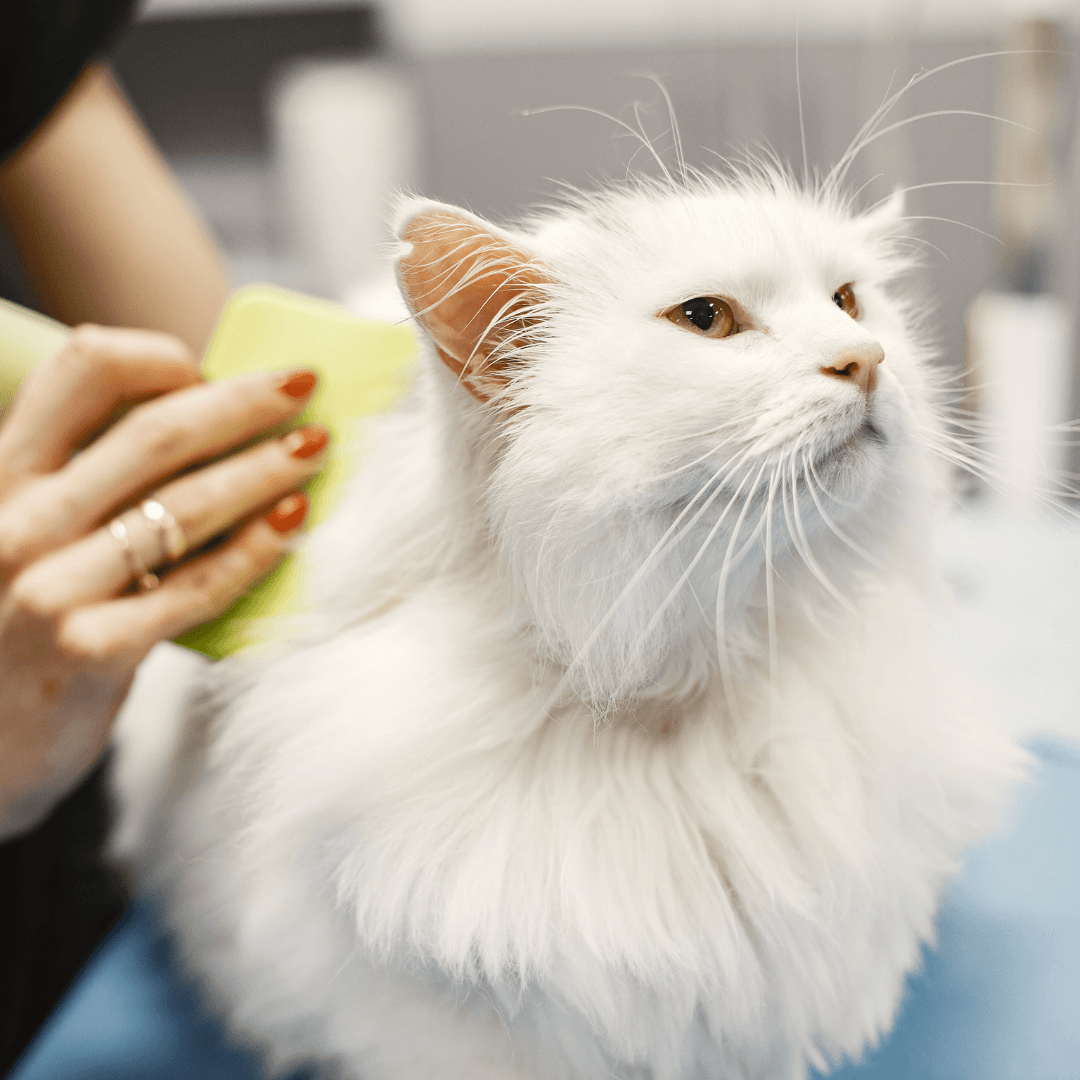
1. Excessive Grooming
Cats may groom themselves excessively when stressed or anxious, including in response to heat.
While grooming is natural, excessive grooming in hot weather can indicate discomfort and overheating.
2. Restlessness Or Agitation
When it is too hot, cats may become restless or agitated. They may pace, meow incessantly, or exhibit other signs of distress as they try to find relief from the heat.
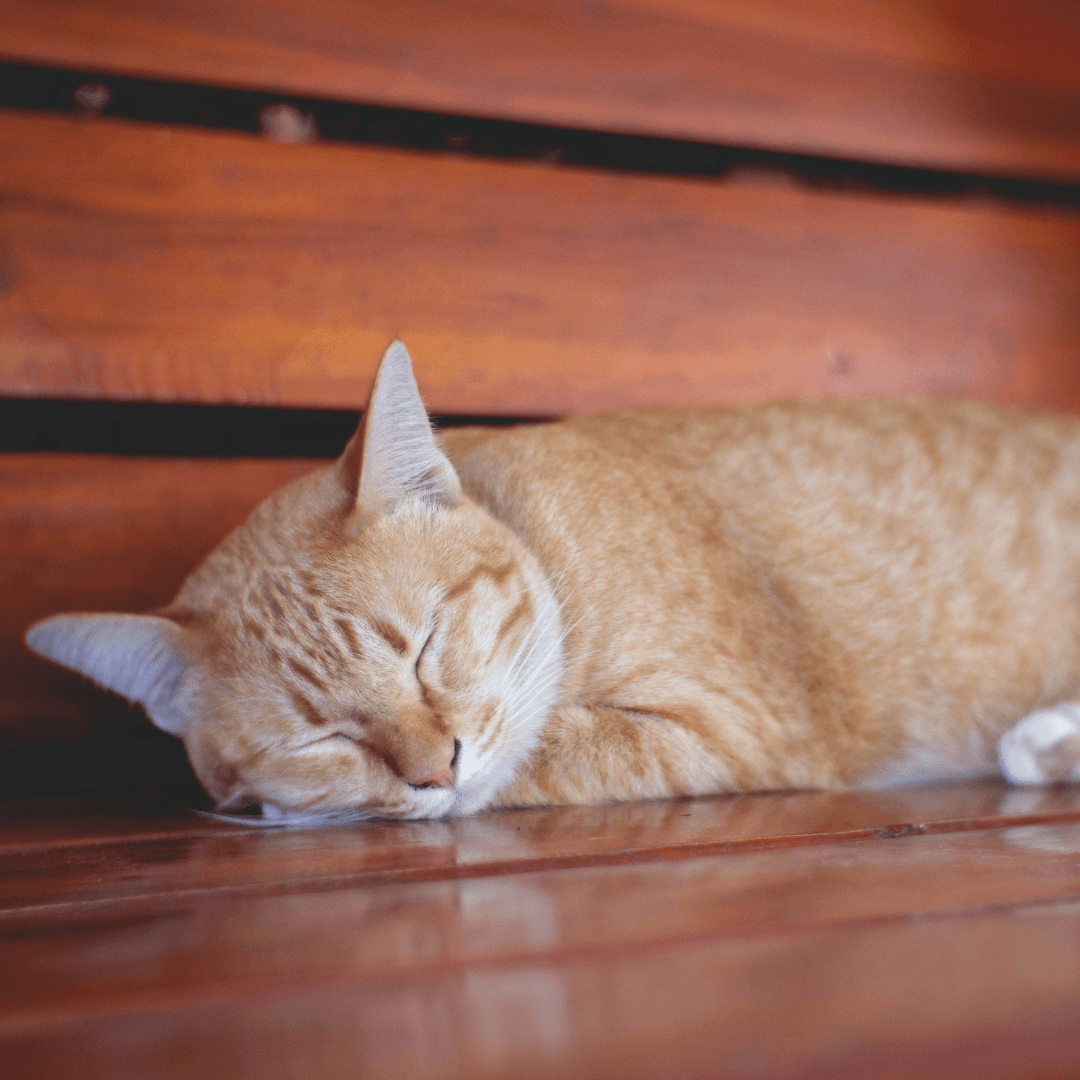
3. Seeking Cool Surfaces
Cats may instinctively seek out cooler surfaces, such as tile floors, sinks, or bathtubs, to lay on when overheating.
If you notice your cat gravitating towards cooler areas in your home, it may be a sign that they are experiencing heatstroke.
4. Elevated Body Temperature
While measuring a cat's body temperature at home may be challenging, an elevated body temperature is a hallmark sign of heatstroke.
A rectal thermometer can assess your cat's temperature, with a normal range of around 100.5 to 102.5°F (38 to 39°C). If your cat's temperature exceeds 104°F (40°C), it indicates heatstroke.
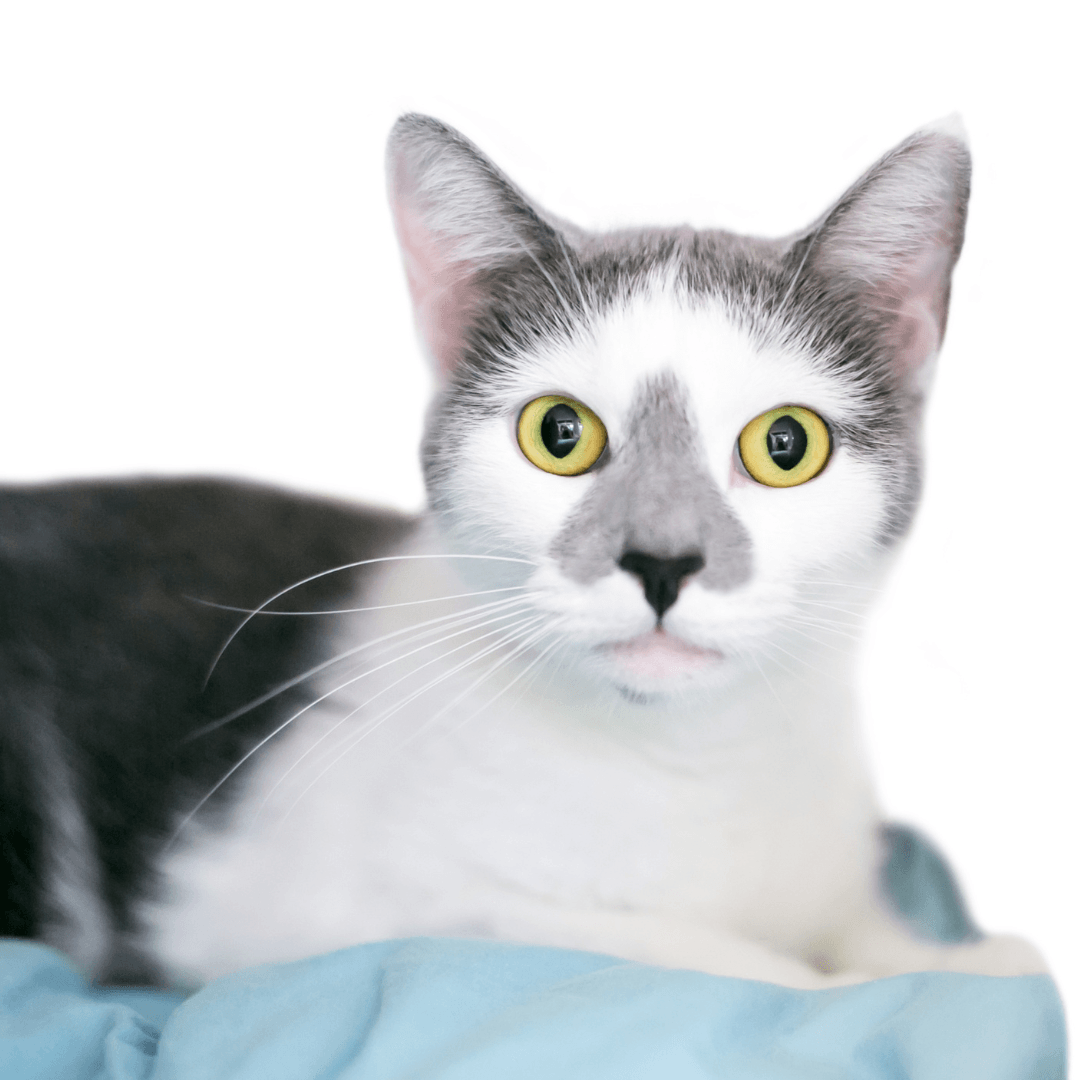
5. Dilated Pupils
Cats experiencing heatstroke may have dilated pupils, a physiological response to stress and increased body temperature. The pupils may appear larger than usual and less responsive to light.
6. Weakness Or Collapse
Cats may become increasingly weak and lethargic as heatstroke progresses. In severe cases, they may collapse or become unable to stand or move properly. Vet care must be given right away because this is a medical emergency.
7. Seizures
Cats may experience seizures or convulsions in severe cases of heatstroke. Seizures occur due to the disruption of normal brain function caused by overheating and can be life-threatening if not treated promptly.

8. Unconsciousness
Heatstroke can lead to loss of consciousness or coma in cats. If your cat loses consciousness, it is critical to seek veterinary care immediately.
Understanding these detailed signs of heatstroke in cats can help pet owners recognize when their feline companions are in distress and take prompt action to cool them down and seek veterinary care.
Early intervention is crucial for the best possible outcome in cases of heatstroke.

How To Prevent Heatstroke In Cats
Preventing heatstroke in cats involves proactive measures to keep them cool and hydrated, especially during hot weather. Here are detailed steps on how to avoid heatstroke in cats:
1. Provide Ample Shade And Shelter
Ensure your cat can access shaded indoor and outdoor areas to escape direct sunlight. Blocking blinds or curtains during peak heat hours helps block out sunlight and maintain a cooler environment.
Providing ample shade and shelter is essential for preventing heat stroke in cats, as it allows them to regulate their body temperature and avoid overheating during hot weather, ensuring their well-being.
2. Stay Hydrated
Always ensure fresh, clean water for your cat. Place multiple water bowls throughout your home to encourage drinking, especially during hot weather.
Check and refill water bowls regularly to prevent dehydration. Adequate hydration is crucial for avoiding heatstroke in cats, as it helps regulate their body temperature and supports overall health and well-being.
3. Maintain A Cool Indoor Environment
Keep your home cool by using fans, air conditioning, or opening windows to promote airflow.
Consider providing cool surfaces, such as ceramic tiles or cooling mats, for your cat to rest on.
Additionally, avoid using heating devices or appliances that can raise the indoor temperature unnecessarily.
4. Limit Outdoor Time
Limit your cat's outdoor time during peak heat hours, usually late morning to early evening, to prevent heatstroke.
Encourage indoor activities or provide outdoor shelter with shade and water for comfort.
High temperatures during these hours risk overheating and dehydration for cats. Minimizing outdoor exposure during peak heat helps protect your cat's well-being and reduces the likelihood of heat-related illnesses.
5. Avoid Hot Surfaces
Be cautious of hot surfaces like asphalt, concrete, or metal during outdoor activities with your cat.
These surfaces can quickly become too hot and cause burns or discomfort to your cat's paw pads. Instead, choose grassy or shaded areas for walks to prevent injuries and ensure your cat's safety.
Being mindful of hot surfaces helps prevent heat-related paw injuries and discomfort for your furry friend during outdoor adventures.
6. Regular Grooming
Regular grooming is crucial for preventing heat stroke in cats. It helps regulate their body temperature by removing excess fur and preventing mats, allowing for better air circulation over their skin.
Brushing your cat regularly removes loose fur and prevents mats, allowing for better air circulation over their skin.
This, especially in hot weather, helps control their body temperature and keeps them from overheating.
Grooming appointments also enable you to check for parasites or skin problems, which improves your cat's general health and well-being.
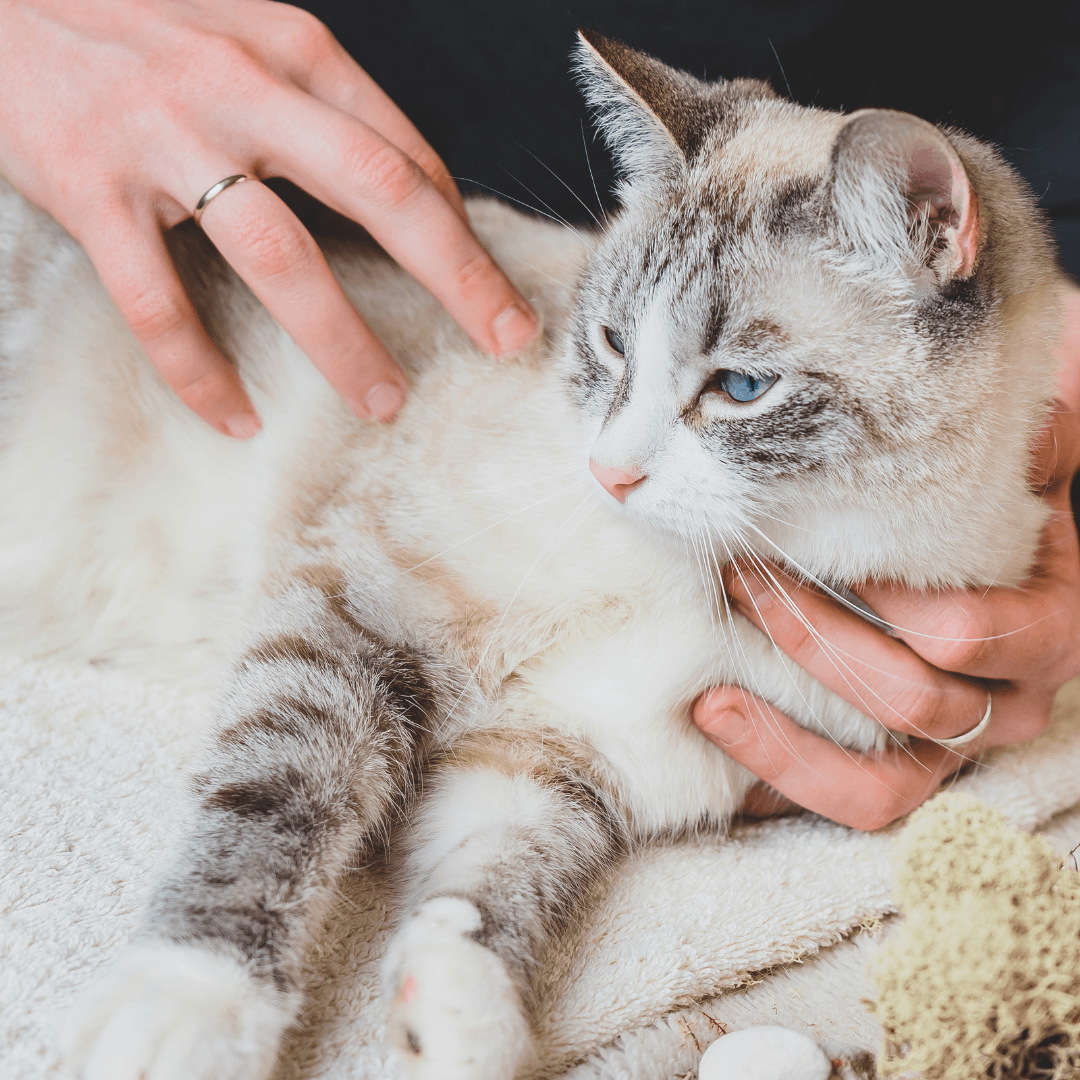
7. Use Cooling Techniques
Provide your cat with various cooling options to help beat the heat. Offer chilled or frozen treats, add ice cubes to their water bowl, or give them frozen peas wrapped in a towel to lean against.
These cooling techniques help lower your cat's body temperature and provide relief during hot weather.
Avoid using ice packs directly on your cat's skin to prevent discomfort or frostbite, ensuring their safety and comfort.
These preventative steps can help keep your cat safe and comfortable during hot weather and help shield them from heatstroke.
Treatment Of Heatstroke In Cats
The treatment of heatstroke in cats typically involves immediate cooling measures and veterinary intervention to address potential complications.
Here are the steps involved in treating heatstroke in cats:
1. Immediate Cooling
Immediate cooling measures are crucial for addressing heat stroke in a cat. They help alleviate heat stress and prevent further complications associated with the condition, ensuring the cat's well-being.
To gradually lower the cat's body temperature, place it on a cool, damp towel or immerse it in lukewarm water.
Avoid using ice-cold water or ice packs directly on the cat's skin, as this can induce shock.
This immediate cooling measure helps alleviate heat stress and prevents further complications associated with heatstroke.
2. Monitoring Vital Signs
After heatstroke, monitor your cat's vital signs, such as body temperature, heart rate, and breathing rate, closely.
Seek immediate veterinary care if the cat exhibits signs of distress or if their condition fails to improve.
Prompt monitoring ensures early detection of complications and allows for timely intervention, optimizing the cat's chances of recovery from heatstroke.
3. Fluid Therapy
Intravenous fluids are often administered to cats suffering from heatstroke to address dehydration and restore electrolyte balance.
This fluid therapy helps stabilize the cat's condition by replenishing lost fluids and essential nutrients.
Intravenous fluids are crucial in treating heatstroke. By supporting organ function and improving hydration levels, they facilitate the cat's recovery and minimize the risk of complications.
4. Treatment Of Complications
Identifying and treating complications is essential for improving the prognosis and ensuring a successful recovery from heat stroke in a cat.
This requires additional measures such as medication and supportive care to manage conditions like kidney failure or respiratory distress.
Treatment may include medication to support kidney function, oxygen therapy to alleviate respiratory distress, and supportive care to address other complications.
Prompt identification and treatment of complications are essential for improving the cat's prognosis and ensuring a successful recovery from heatstroke.
5. Recovery And Follow-Up
Many cats can recover from heatstroke with prompt and proper treatment. Follow-up appointments with the veterinarian may be required to assess the cat's progress and ensure complete recovery.
During these follow-up visits, the veterinarian will monitor the cat's vital signs, evaluate organ function, and address any lingering issues or concerns.
Close monitoring and follow-up care are crucial for ensuring the cat's long-term health and well-being after a heatstroke episode.
Overall, treating heatstroke in cats requires prompt recognition, immediate cooling measures, and veterinary intervention to prevent serious complications and improve the cat's chances of recovery.

Recovery And Rehabilitation For Your Cat
Depending on the intensity of the illness and how quickly it is treated, cats who have suffered from heat stroke may take a variety of recovery times.
Initially, your cat may require supportive care to stabilize their condition, including intravenous fluids to address dehydration and electrolyte imbalances.
Once your cat's condition has stabilized, they will need time to rest and recuperate in a cool, comfortable environment.
During this period, monitoring your cat closely for any signs of lingering symptoms or complications, such as lethargy, weakness, or changes in appetite or behaviour, is essential.
Your veterinarian may recommend follow-up appointments to assess your cat's progress and provide additional treatments or supportive care.
In terms of rehabilitation, your cat may benefit from gentle exercise and physical therapy to help rebuild strength and mobility, especially if they experience muscle weakness or fatigue due to heat stroke.
This may include gentle stretching, walking, or playing with interactive toys to encourage movement and improve muscle tone.
It is crucial to begin carefully and gradually raise the intensity of exercise as your cat's strength and endurance return.
Be attentive to their needs and offer comfort and reassurance as they recover from their ordeal. With proper care and attention, many cats can fully recover from heat stroke and resume their normal activities and quality of life.
However, following your veterinarian's recommendations is essential to ensure the best possible outcome for your cat's health and well-being.
Conclusion
Heat stroke poses a significant risk to cats, particularly during hot weather. Identifying the warning signals and taking preventative action to safeguard their health and well-being is crucial.
Cat owners can minimize the risk of heat stroke by providing ample shade, staying hydrated, and limiting outdoor time during peak temperatures.
Swift action is crucial in an emergency. Moving the cat to a cooler area and providing immediate cooling measures can make a difference in its recovery.
However, prevention remains the best course of action. Through awareness, education, and responsible pet care practices, we can help safeguard our feline companions from the dangers of heat stroke.
By prioritizing their safety and comfort, we ensure that our beloved cats can enjoy long, healthy lives free from the threat of heat-related illnesses.
Let us remain vigilant and proactive in protecting our furry friends from the perils of heat stroke.
I trust you enjoyed this article on Understanding Heat Stroke In A Cat. Please stay tuned for more blog posts soon. Take care!
JeannetteZ
>>>Please click here to read my all-inclusive article about the Best Cat Care Tips For Beginners<<<
>>>Please click here to read more about cats on Wikipedia<<<
Your Opinion Is Important To Me
Do you have thoughts, ideas, or questions? I would love to hear from you. Please leave me your questions, experiences, and remarks about this article, Understanding Heat Stroke In A Cat, in the comments section below. You can also reach me by email at Jeannette@Close-To-Nature.org.
Disclosure
This post may contain affiliate links. As an Amazon Associate and other affiliate programs, I earn from qualifying purchases at no extra cost to you. Please read my full affiliate disclosure.
You might also enjoy these blog posts:
How To Toilet Train A 6-Month-Old Puppy
Solutions To Dog Overweight Problems
Raw Vegetables For Dogs – A Guide To Healthy Snacking
Best Homemade Cat Food Recipes
Type Of Soil For Vegetable Gardens

